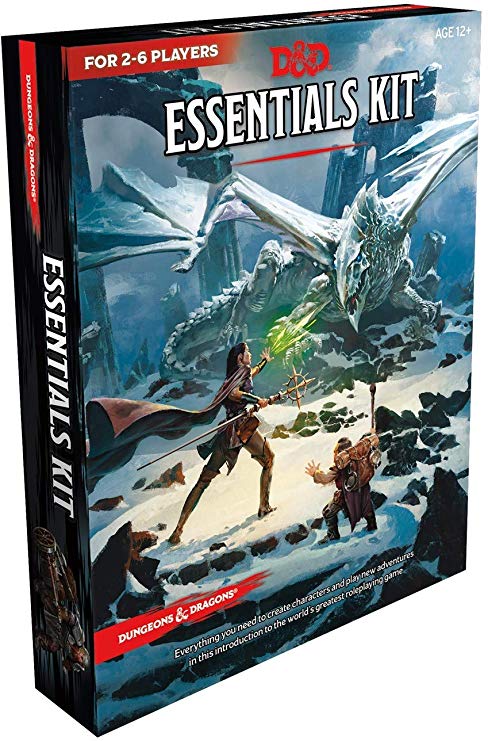I’m on a study project to improve my understanding of roleplaying games. To this end, I already have two reading projects, A Game Per Year and An Adventure Per Year. This is the third, with the goal of reading or playing 52 games made this year or last year. Originally I considered making this “A New RPG Per Week” and that’s where the number 52 comes from, even though a weekly schedule is probably not within my abilities.

The Essentials Kit published this summer is the third beginner set available for D&D 5th Edition. The first was Starter Set, published in 2014 to pave the way for the publication of the core books Player’s Handbook, Dungeon Master’s Guide and Monster Manual. The second is the Stranger Things -themed set published in early 2019.
(Roleplaying companies seem to place a premium on coming up with a unique descriptor for their introductory boxed sets. In addition to D&D’s Starter Set and Essentials Kit, this year there’s a Beginner Box for Shadowrun and a Jumpstart Kit for Cyberpunk Red.)
Intended to get people to start playing D&D, Essentials Kit is an all-in-one collection of the basic rules for low level characters, game aids like cards and dice as well as an adventure called The Dragon of Icespire Peak.
It’s hard to read Essentials Kit without comparing it to the Starter Set. The Starter Set is an extremely well made beginner product and the adventure it contains, The Lost Mines of Phandelver, often features on lists of best D&D 5th Edition adventures.
It’s interesting to see that there’s a clear change in style between the two sets. Essentials Kit has a more frivolous tone with jokey magical items, technognomes and NPCs reminiscent of Wild West adventures for kids. Magical items are in generous supply.
This contrasts starkly with Starter Set which put more effort in establishing a fantasy world and it’s inhabitants as a believable, three-dimensional place.
Both The Lost Mines of Phandelver and The Dragon of Icespire Peak are set in the same town, Phandalin on the Sword Coast of the Forgotten Realms. However, while in the Starter Set there’s a rich panoply of NPCs, in Essentials Kit there’s a job board like videogames often use for lesser quests.
In terms of physical production, Essentials Kit has some fun stuff. There are cards for magical items and special powers, a proper map and plenty of dice.
Looking at the progression between the two sets, it feels like there’s a distinct move away from involved roleplaying where character and setting matters and towards a gamey, mechanistic, casual experience.